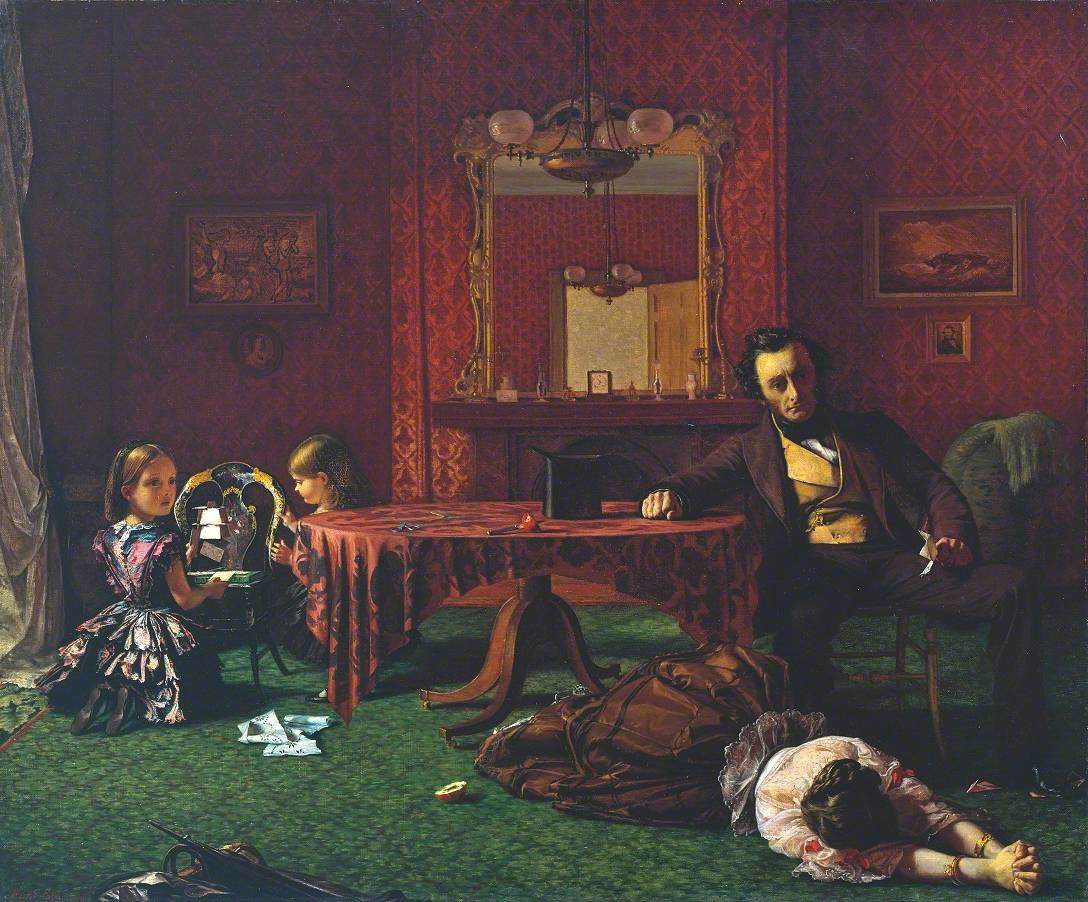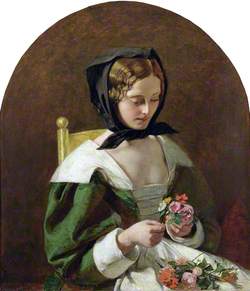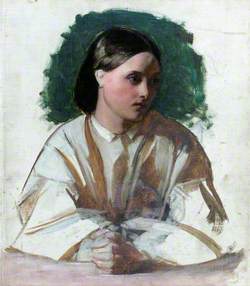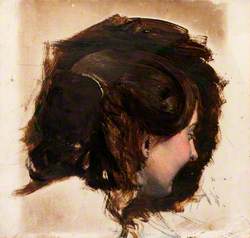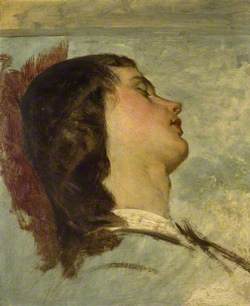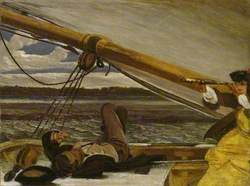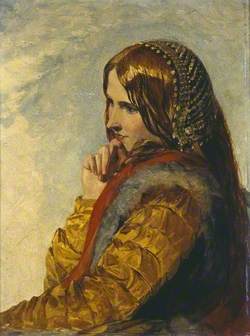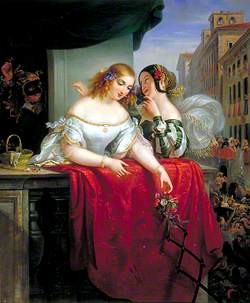How you can use this image
This image is available to be shared and re-used under the terms of the Creative Commons Attribution-NonCommercial-NoDerivatives licence (CC BY-NC-ND).
You can reproduce this image for non-commercial purposes and you are not able to change or modify it in any way.
Wherever you reproduce the image you must attribute the original creators (acknowledge the original artist(s) and the person/organisation that took the photograph of the work) and any other rights holders.
Review our guidance pages which explain how you can reuse images, how to credit an image and how to find more images in the public domain or with a Creative Commons licence available.
DownloadNotes
Add or edit a note on this artwork that only you can see. You can find notes again by going to the ‘Notes’ section of your account.
This is the first of a set of three modern-life pictures on the theme of the fallen woman. The other two (N032279 and N03280) are also in the Tate collection. They are typical of the social moralist pictures that were popular in Victorian art. The theme of the triptych is the discovery of the woman's infidelity and its consequences. In this first scene the wife lies prostrate at her husband's feet, while he sits grimly at the table and their children (the older girl modelled by William Frith's daughter) play cards in the background. The husband is holding a letter, evidence of his wife's adultery, and simultaneously crushes a miniature of her lover under his foot. The setting is an ordinary middle-class drawing room, but closer observation reveals that the room is full of symbols.
In the background of the picture the mirror reflects an open door, denoting the woman's impending departure from the home. The position of her arms and the bracelets round her wrists give the impression that she is shackled. In Victorian England a man could safely take a mistress without fear of recrimination, but for a woman to be unfaithful was an unforgivable crime. As Caroline Norton, an early feminist, wrote, 'the faults of women are visited as sins, the sins of men are not even visited as faults' (quote in Lambourne, p.374). The set of pictures was exhibited at the Royal Academy in 1858 with no title, but with the subtitle, 'August the 4th – Have just heard that B – has been dead more than a fortnight, so his poor children have now lost both parents. I hear she was seen on Friday last near the Strand, evidently without a place to lay her head. What a fall hers has been!'
Further reading: Lionel Lambourne, 'Victorian Painting', London 1999, pp.374–375, reproduced p.376, in colour. Christopher Wood, 'Victorian Painting', London 1999, pp.52–53, reproduced p.52, in colour. Frances Fowle December 2000
Title
Past and Present, No. 1
Date
1858
Medium
Oil on canvas
Measurements
H 63.5 x W 76.2 cm
Accession number
N03278
Acquisition method
Presented by Sir Alec and Lady Martin in memory of their daughter Nora 1918
Work type
Painting
Inscription description
date inscribed
